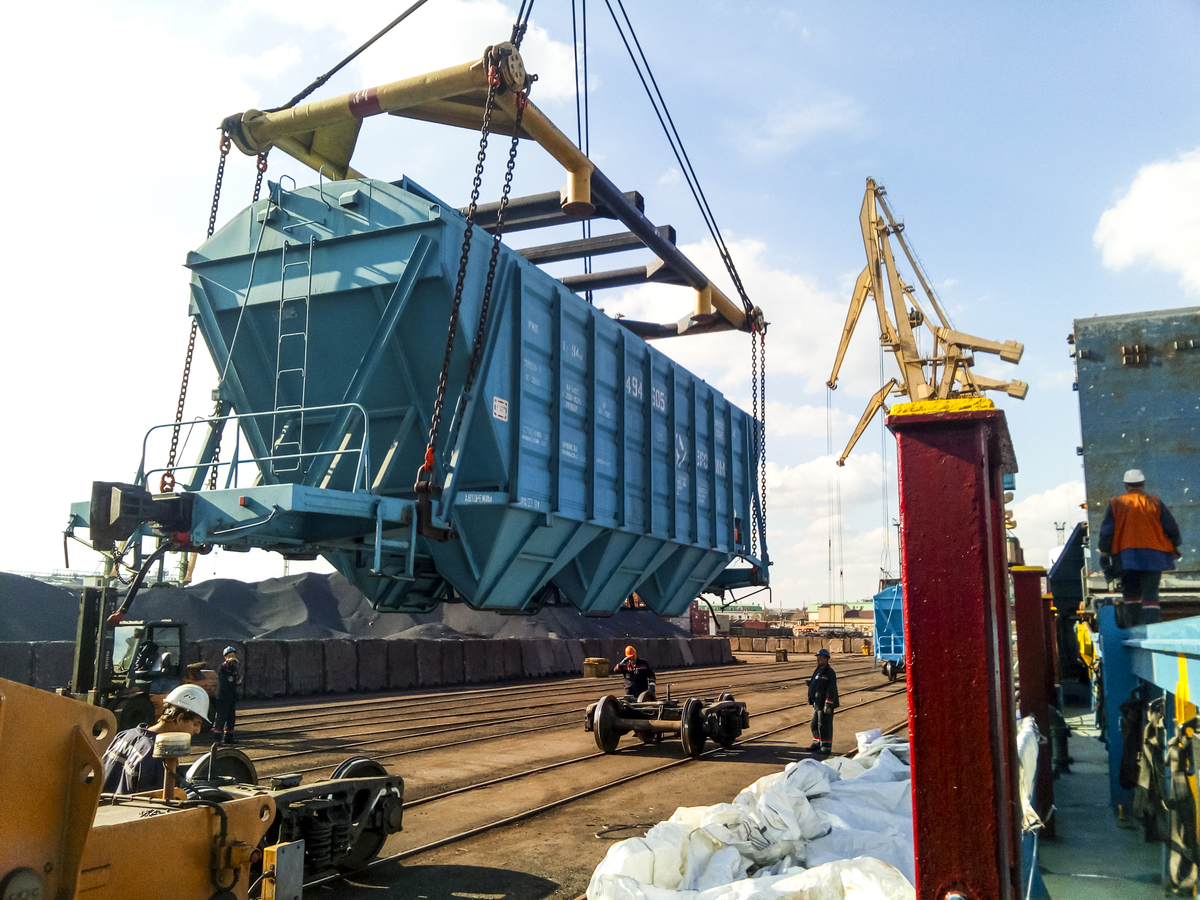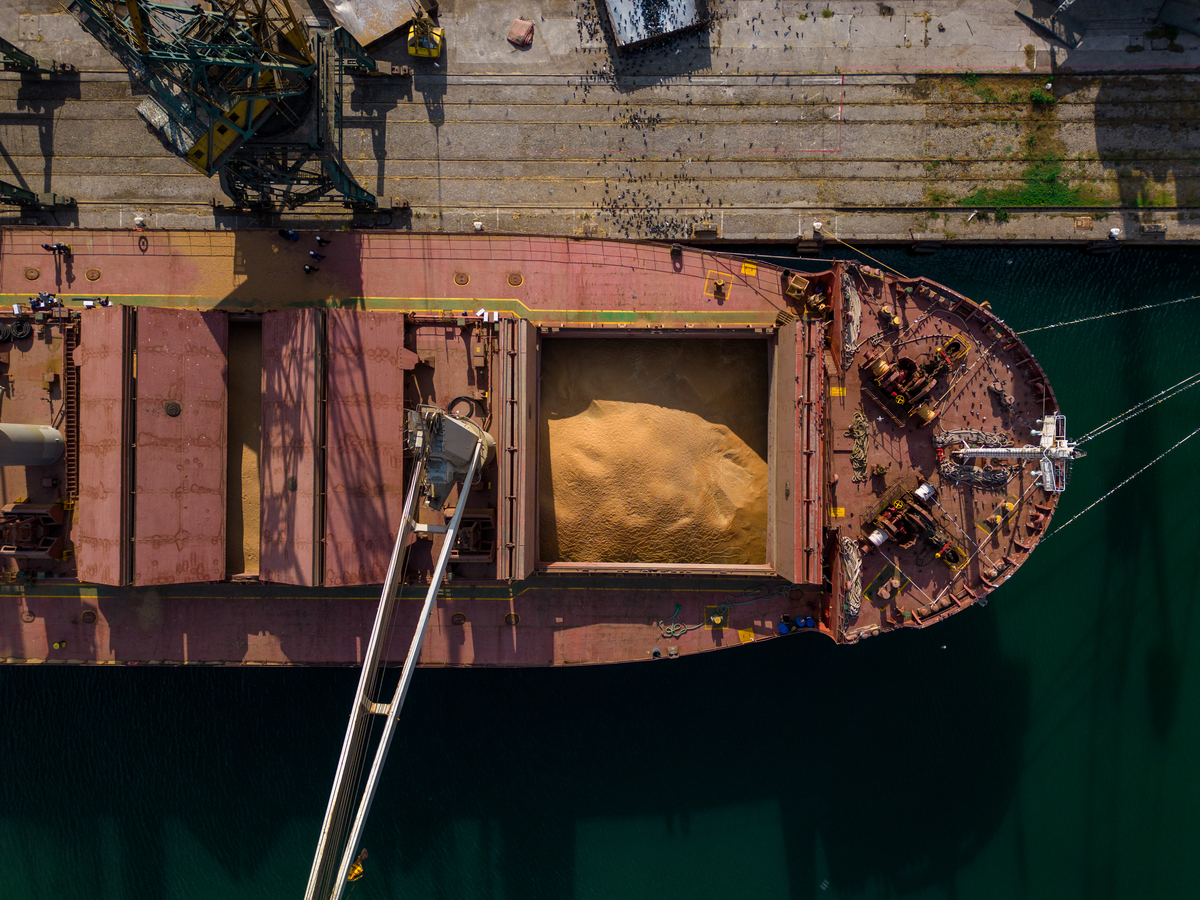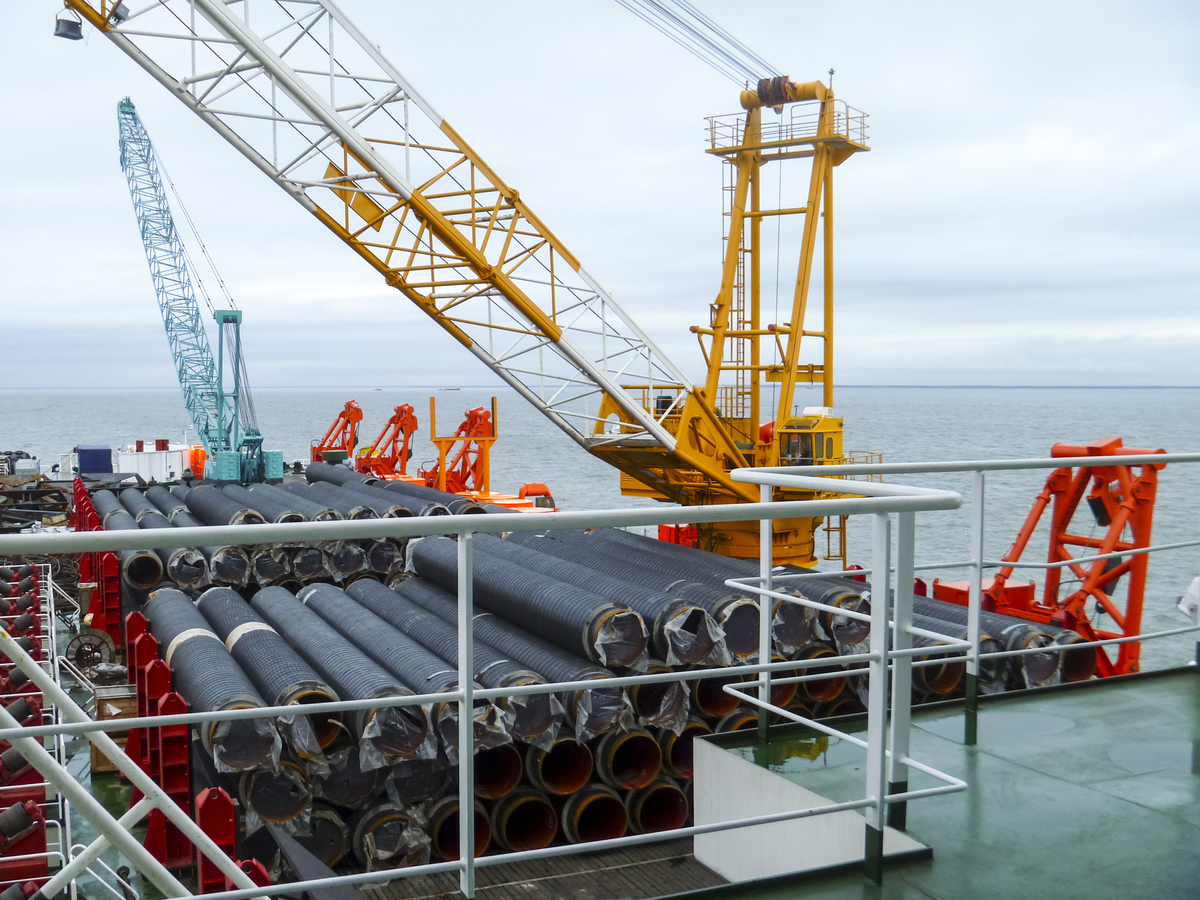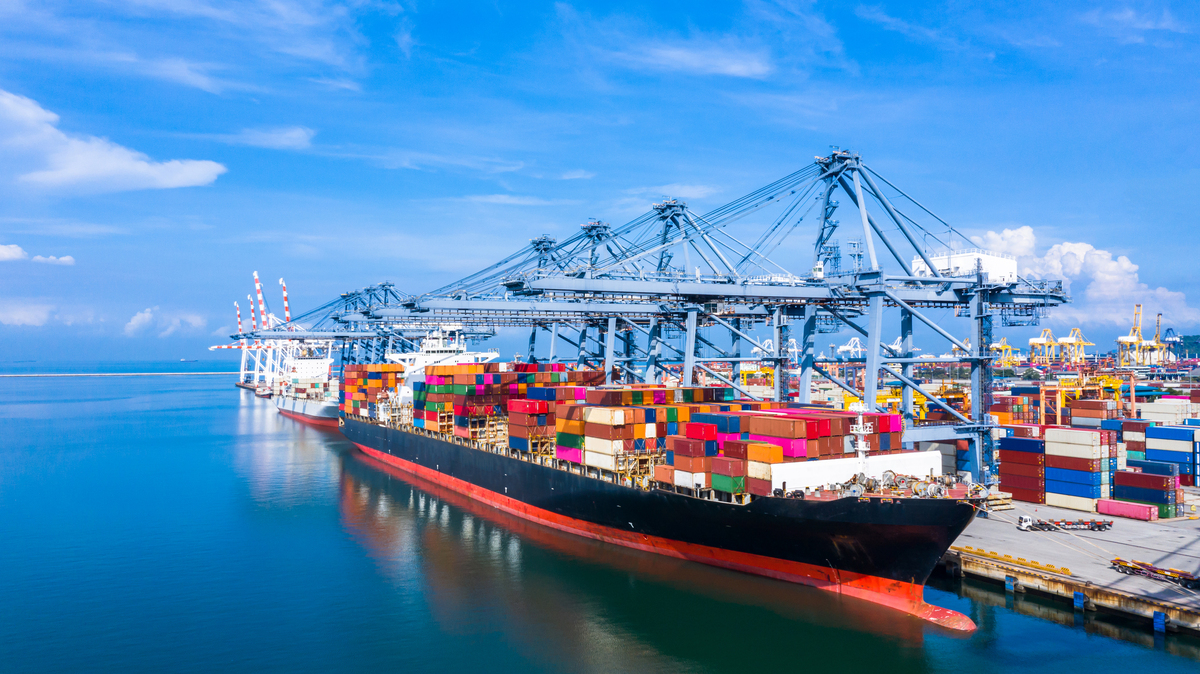If you are looking for a way to transport large, heavy, or special shaped cargo, Breakbulk shipping might be the ideal solution. With its flexibility and capacity to handle goods that cannot fit into standard containers, breakbulk has become a popular choice for project cargo, large machinery, and industrial equipment. While it may come with higher costs, the advantages in terms of flexibility and the ability to move oversized items make breakbulk a critical option in the logistics industry. For businesses seeking efficient cargo handling, understanding the principles and processes of breakbulk shipping is essential for making the right transportation choice.

สารบัญ
- What is Breakbulk Cargo?
- Understanding Breakbulk and Out of Gauge (OOG) Cargo
- Breakbulk Shipping vs Container Shipping: Key Differences
- How Is Breakbulk Cargo Shipped? Step-by-Step Process
- Advantages and Disadvantages of Breakbulk Cargo
- How to Book Breakbulk Cargo Shipping
What is Breakbulk Cargo?
Have you ever wondered how large, oddly shaped, or oversized items that can’t fit into a standard container are transported? The answer is Breakbulk cargo!
Breakbulk cargo refers to goods that are transported individually, rather than being packed together in a container or shipped as bulk cargo. These items are often large, heavy, special shapes, or fragile, requiring special handling when loading and securing them on ships or other vehicles.
What Types of Goods Are Suitable for Breakbulk Shipping?
A variety of products are suitable for breakbulk shipping due to their unique characteristics that prevent them from fitting into standard containers. Common examples of breakbulk cargo include:
– Large Machinery: Such as heavy machinery, industrial factory equipment, wind turbines
– Vehicles: Such as cars, trucks, ships, and some aircraft
– Steel Structures: Such as bridges, large building components
– Large Pipes: Such as pipes with a diameter exceeding 4-5 meters, pipes for the oil and gas industry
– Items Packed in Special Packaging: Such as large wooden crates, large rolls of paper
– Special Shapes Products: Which cannot be arranged in a container
How Is Breakbulk Cargo Different from Bulk Cargo?
Although both breakbulk and bulk cargo are not packed in standard containers, there are key differences between them:
Bulk Cargo (Loose Bulk Cargo):
– Characteristics: Unpackaged, homogeneous, and transported in large quantities.
– Examples: Seeds, coal, ores, fertilizers, oil.
– Transportation: Loaded directly into the ship’s hold or specific containers, unloaded using conveyor belts or pipelines.
Breakbulk Cargo (General Cargo in Pieces):
– Characteristics: Packaged in smaller units (such as boxes, crates, bags, rolls), with various shapes and sizes.
– Examples: Machinery, steel bars, processed wood, finished products.
– Transportation: Loaded and unloaded piece by piece using cranes or other equipment.

Understanding Breakbulk and Out of Gauge (OOG) Cargo
You may often hear the term “Out of Gauge (OOG) cargo” mentioned alongside Breakbulk cargo. While they are related, they are not exactly the same.
Breakbulk Cargo: This is a broad term that refers to cargo that cannot fit into standard containers.
Out of Gauge (OOG) Cargo: This is a specific type of Breakbulk cargo that exceeds the dimensional limits of a standard container, whether in length, width, or height. OOG cargo typically requires specialized handling and equipment, such as open-deck vessels or special flatbed trailers.
Therefore, all OOG cargo is considered Breakbulk, but not all Breakbulk cargo is necessarily OOG.

Breakbulk Shipping vs Container Shipping: Key Differences
Choosing between breakbulk and container shipping depends primarily on the nature of the cargo. Here are the main differences:
Breakbulk Shipping
– Cargo Handling: Goods are not packed in containers but shipped as individual pieces or smaller units, such as steel coils, large machinery, or bagged/crated items on pallets.
– Suitable for: Large, heavy, or special shaped cargo that cannot fit into standard containers.
– Handling Equipment: Requires manual labor and specialized equipment like cranes and forklifts.
– Flexibility: Offers more flexibility for transporting diverse types of cargo.
– Cost and Time: Generally has higher per-unit transport costs and longer loading/unloading times.
Container Shipping
– Cargo Handling: Goods are packed in standard-sized containers.
– Suitable for: Standard-sized items with regular shapes that can fit within the container’s dimensions.
– Efficiency: Faster and more efficient loading and unloading, as entire containers are moved at once.
– Protection: Reduces the risk of damage and loss during transport.
– Cost Efficiency: Typically has lower per-unit transport costs for large volumes of cargo.

How Is Breakbulk Cargo Shipped? Step-by-Step Process
Transporting breakbulk cargo is more complex than container shipping, as it requires careful planning and specialized handling at each stage:
1. Planning and Booking
Exporters must contact breakbulk shipping providers to share cargo details, including size, weight, and pickup/delivery points.
The carrier assesses the feasibility and provides a quote based on the cargo specifications.
2. Packaging
Breakbulk cargo often requires robust, custom packaging to prevent damage during transit, such as heavy-duty crates, reinforced pallets, or protective wrapping.
3. Inland Transportation
The cargo is transported from the factory or warehouse to the port, often using flatbed trucks, specialized trailers, or barges, depending on the cargo size and weight.
4. Terminal Handling
Upon arrival at the port, the cargo is stored in a dedicated breakbulk area, awaiting loading onto the vessel.
5. Loading onto the Vessel
Specialized equipment, such as large cranes and slings, is used to lift the cargo onto the ship.
This step requires skilled operators to ensure the cargo is loaded securely and efficiently.
6. Sea Freight
The cargo is transported to the destination port using a suitable vessel, depending on the cargo type and volume.
7. Discharging at the Destination Port
The cargo is unloaded using the same specialized equipment and methods as during the loading process.
8. On-carriage
After unloading, the cargo is transported from the port to its final destination, using trucks, trains, or barges, depending on the final delivery location.
9. Delivery
The cargo is delivered to the consignee as specified in the shipping documents.
Advantages and Disadvantages of Breakbulk Cargo
Breakbulk shipping offers several benefits but also has its drawbacks that businesses should consider:
Advantages
– Supports Large and Special Shaped Cargo: Ideal for items that cannot fit into standard containers, providing a practical solution for oversized goods.
– Flexible Handling: Allows for customized loading and stowing methods based on the unique characteristics of each piece.
– High Volume Capacity: Despite being transported as individual pieces, breakbulk vessels can carry a significant total volume of cargo.
– Access to Smaller Ports: Some breakbulk vessels can dock at smaller ports with limited infrastructure, providing more route options.
Disadvantages
– Higher Handling Costs: Requires more labor and specialized equipment for loading and unloading, leading to higher costs.
– Increased Risk of Damage: Multiple handling stages increase the risk of cargo damage.
– Longer Transit Times: Complex loading and stowing procedures can extend the overall shipping time.
– Complex Planning and Coordination: Requires careful coordination among multiple parties to ensure smooth transportation.
How to Book Breakbulk Cargo Shipping
Booking breakbulk cargo shipping should start with contacting Freight Ranger, a specialized provider experienced in handling this type of cargo. Here’s what you should prepare and do:
1.Provide Detailed Cargo Information
– Clearly describe the cargo type, dimensions, weight, quantity, and any special characteristics (e.g., center of gravity, fragility).
2.Specify Pickup and Delivery Locations
– Provide the addresses and contact details for both the pickup and delivery points.
3.Communicate Special Requirements (if any)
– Inform the provider of any special packaging, lifting, or storage requirements.
4.Request a Quote
– The provider will assess the information and provide a shipping quote, including any related service fees.
5.Confirm the Booking
– Once you’ve made a decision, confirm the booking and sign the shipping contract.
6.Coordinate Documentation
-Prepare the necessary documents for international shipping, such as the Bill of Lading, Commercial Invoice, and other related paperwork.
7.Track Shipment Status
– Regularly monitor the progress of your shipment to ensure a smooth delivery.
Choosing an experienced and reliable provider like Freight Ranger is crucial to ensure your breakbulk cargo is handled safely and efficiently throughout the entire shipping process.
